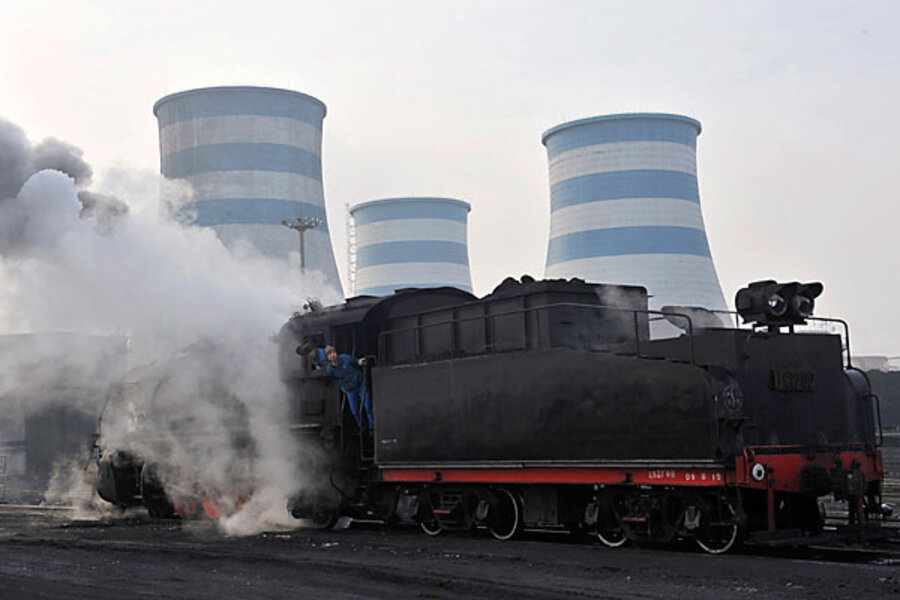Why has global warming paused? Water vapor may be in the answer.
Loading...
A decade-long plateau in global warming appears to have occurred in large part because the stratosphere – the layer of atmosphere that few but airliners enter – got drier.
That’s an explanation by a team of atmospheric scientists from the United States and Germany. They’ve studied trends in stratospheric water vapor over the past 30 years and calculated the effects of those trends on temperatures.
A decline in stratospheric water vapor between 2000 and 2009 followed an apparent increase between 1980 and 2000, according to balloon and satellite measurements that the team used. The decline slowed the long-term growth in global average temperatures by some 25 percent, compared with the warming one could expect from rising concentrations of greenhouse gases alone, the team estimates.
"There's not a lot of water in the stratosphere. It's extremely dry," says Susan Solomon, an atmospheric scientist at the National Oceanic and Atmospheric Administration's Earth System Research Laboratory in Boulder, Colo., who led the team. "But it packs a wallop" in terms of its climatic effects, she says.
Other factors probably played a role as well in the temperature plateau, the team acknowledges.
Another contributor could have been sulfate aerosols from the rising number of coal-fired power plants in China, point out researchers such as Drew Shindell, with the National Aeronautics and Space Administration’s Goddard Institute for Space Studies (GISS) in New York.
Still, he and others agree, the new results indicate that stratospheric water vapor, especially in the lowest regions of the stratosphere, can have a significant impact on global average temperature trends when viewed in decade-long time frames.
Water vapor is the most abundant greenhouse gas in the atmosphere. By some estimates, it accounts for anywhere from 36 percent to 85 percent of the atmosphere's greenhouse effect, depending on whether clouds are included.
But the vast majority of that water vapor resides in the troposphere, which is the layer below the stratosphere. This is where the most of the day-to-day weather – and over long periods, climate – activity takes place.
Despite claims in some circles that global warming is over, the past decade was the warmest on record globally, according to records compiled by the GISS. Four of the 10 years were in a statistical tie for second place for the distinction of warmest year on record.
Researchers have shown that even in the context of global warming, the climate will still display natural variations that can lead to decades sprinkled throughout a century that display little or no warming, or even cooling.
Scientists have also been aware that water vapor in the stratosphere, particularly in its lowest reaches, can affect temperatures up there as well as at Earth’s surface.
But the team's work, which appears in this week's Science Express, an online publication affiliated with the journal Science, appears to be the first time anyone has looked at that mechanism in the context of the past decade's slowdown in warming, says Sam Levis, a scientist with the National Center for Atmospheric Research in Boulder, Colo.
The stratosphere's meager supply of water vapor comes largely via convection in the tropics – via the strong thunderstorms that build there, Dr. Solomon explains.
Atmospheric temperatures in the troposphere fall with altitude, drawing moisture out of a parcel of air as it rises. In effect, the air that reaches the lower stratosphere is freeze-dried, she explains.
The amount of moisture reaching the stratosphere depends on the coldest temperatures a parcel of air passes through on its way up. Interestingly, temperatures at this "cold point" fell during the past decade, the team found.
Although the reasons for the decade-long drop are unclear, she says, the trend coincided with a prolonged period of La Niña events in the tropical Pacific, in which water along much of the equatorial region was cooler than normal.
Another potential contributor to variation in stratospheric water vapor: fine particles that result from burning biomass for fuel or to clear farmland in the tropics. In 2002, atmospheric researcher Steven Sherwood described how increases in particles can lead to increases in stratospheric water vapor.
One of the "grand challenges" that researchers now face is trying to figure out whether the variability that Solomon and her colleagues have identified represents a natural swing in climate or whether it represents a broader climate feedback that might over the long term offset the effects of what scientists say is human-triggered global warming.
Solomon and others say they suspect that the decline she and her colleagues found represents a natural cycle in the climate system.
If it turns out to be a longer-term feedback, "it doesn't upset the apple cart altogether," she says. But, she adds, it would represent an offset to global warming that scientists would have to account for in their projections of how the climate system responds to increasing levels of greenhouse gases.
-----
Follow us on Twitter.





